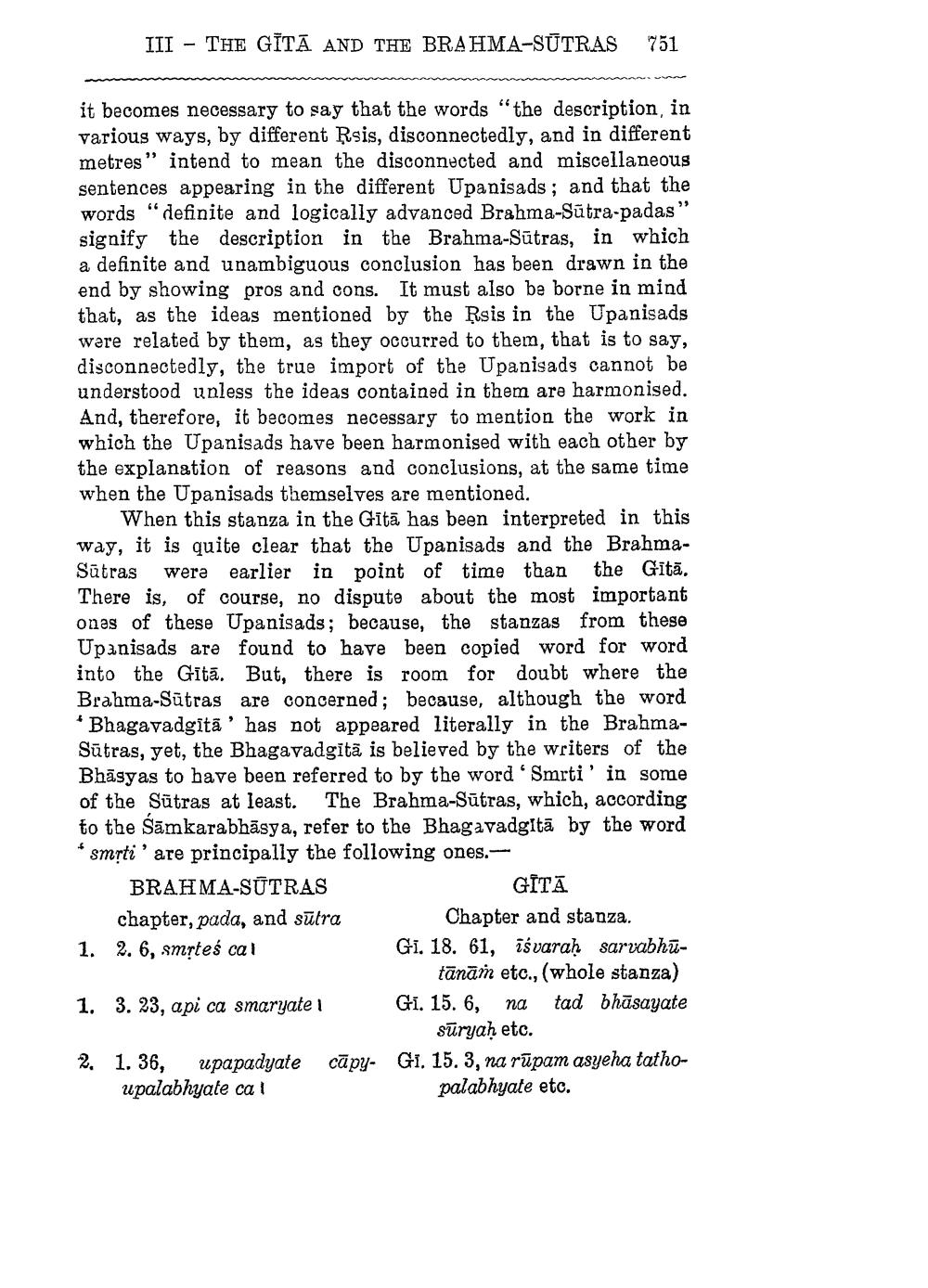________________
III - THE GĪTĀ AND THE BRAHMA-SŪTRAS 751
it becomes necessary to say that the words "the description, in various ways, by different Rsis, disconnectedly, and in different metres" intend to mean the disconnected and miscellaneous sentences appearing in the different Upanisads; and that the words “definite and logically advanced Brahma-Sūtra-padas" signify the description in the Brahma-Sūtras, in which a definite and unambiguous conclusion has been drawn in the end by showing pros and cons. It must also be borne in mind that, as the ideas mentioned by the Rsis in the Upanisads were related by them, as they occurred to them, that is to say, disconnectedly, the true import of the Upanisads cannot be understood unless the ideas contained in them are harmonised. And, therefore, it becomes necessary to mention the work in which the Upanisads have been harmonised with each other by the explanation of reasons and conclusions, at the same time when the Upanisads themselves are mentioned.
When this stanza in the Gītā has been interpreted in this way, it is quite clear that the Upanisads and the BrahmaSūtras were earlier in point of time than the Gītā, There is, of course, no dispute about the most important onas of these Upanisads; because, the stanzas from these Upanisads are found to have been copied word for word into the Gītā. But, there is room for doubt where the Brahma-Sūtras are concerned; because, although the word * Bhagavadgitā' has not appeared literally in the BrahmaSūtras, yet, the Bhagavadgitā is believed by the writers of the Bhāsyas to have been referred to by the word 'Smrti' in some of the Sūtras at least. The Brahma-Sūtras, which, according to the Sāmkarabhāsya, refer to the Bhagavadgitā by the word * smrti' are principally the following ones.-- BRAHMA-SŪTRAS
GITA chapter, pada, and sutra
Chapter and stanza. 1. 2. 6, smrteś cal
Gi. 18. 61, iśvaraḥ sarvabhū
tānāṁ etc., (whole stanza) 1. 3. 23, api ca smaryate 1 Gi. 15. 6, na tad bhāsayate
sūryah etc. 2. 1. 36, upapadyate cūpy- GI. 15. 3, na rūpam asyeha tathoupalabhyate ca !
palabhyate etc.




